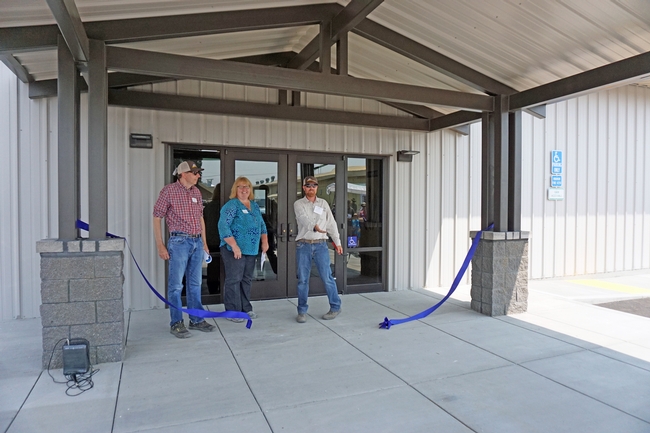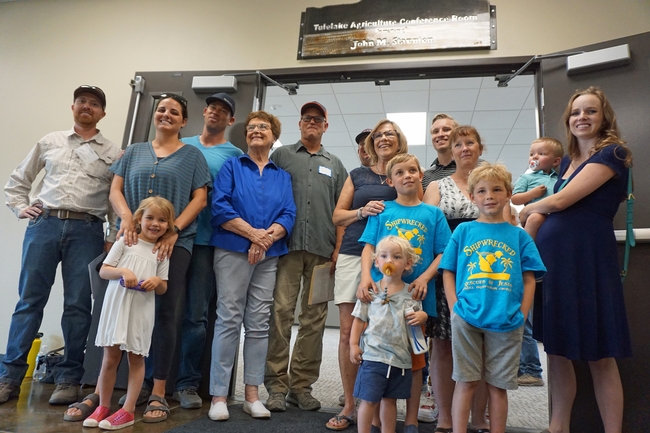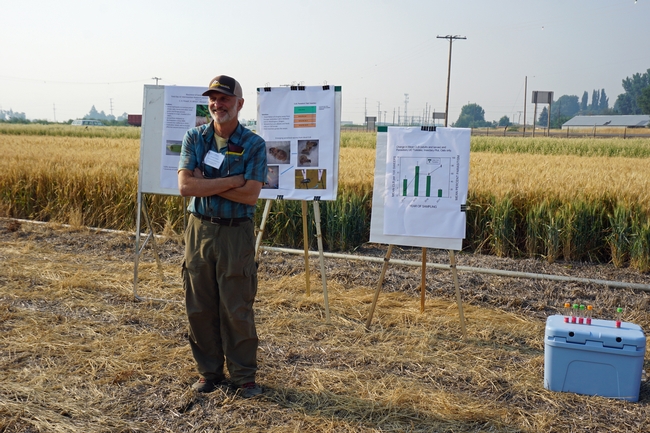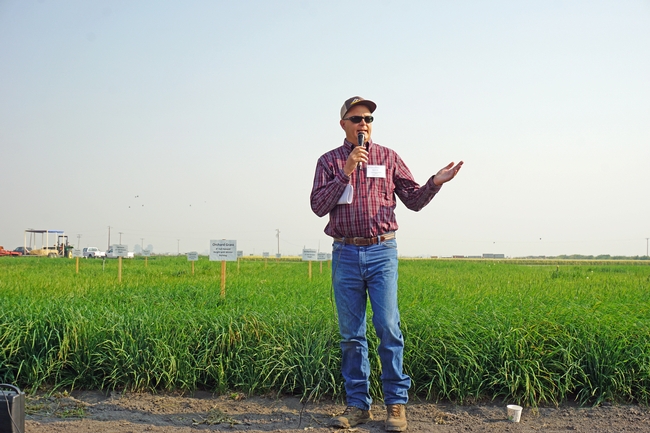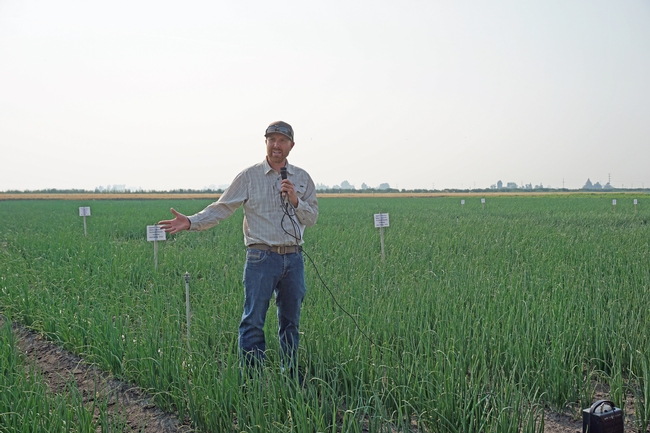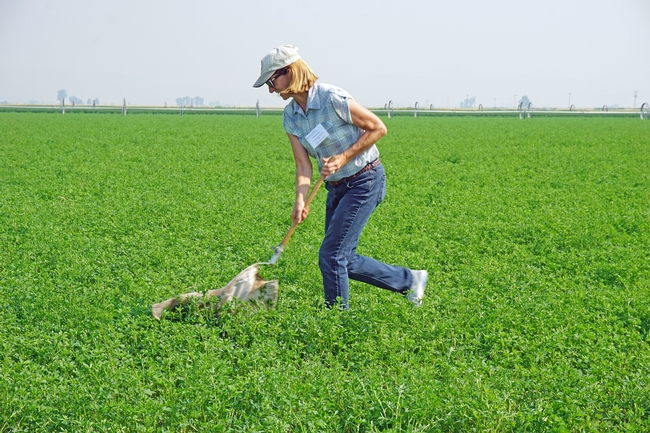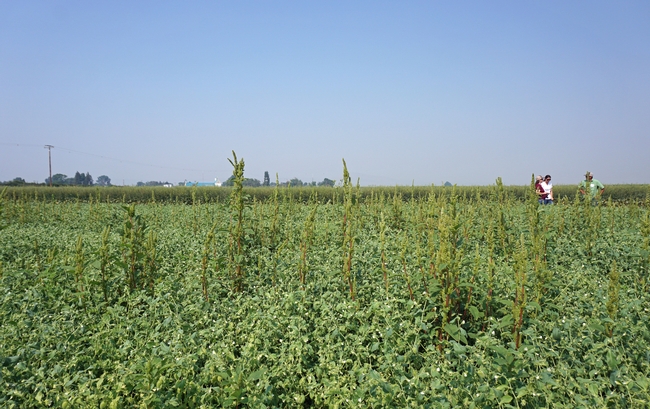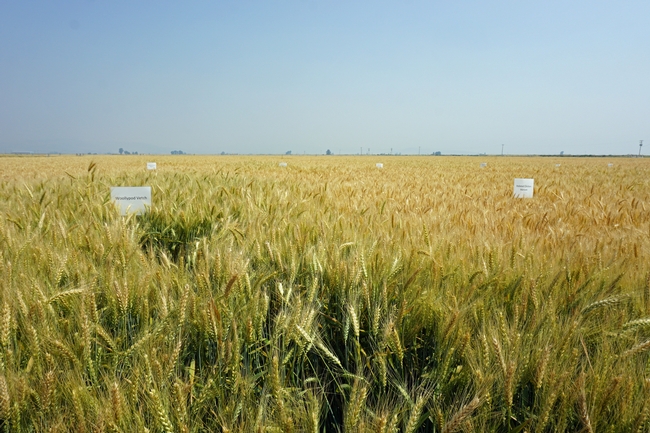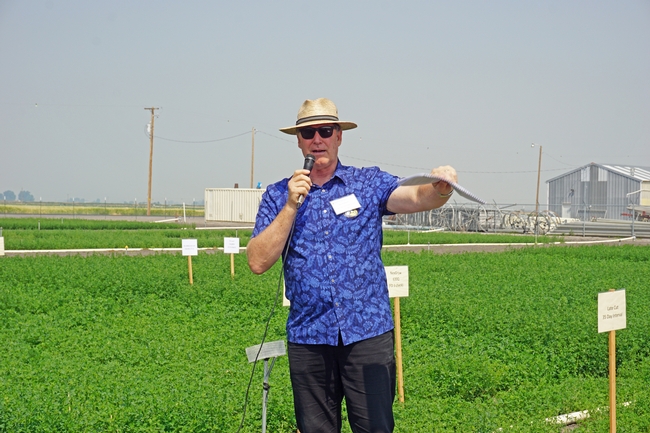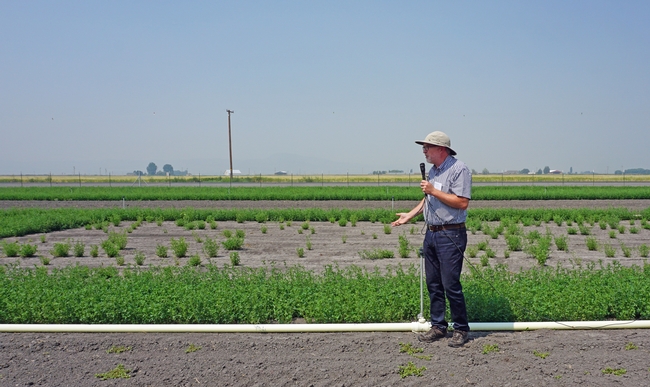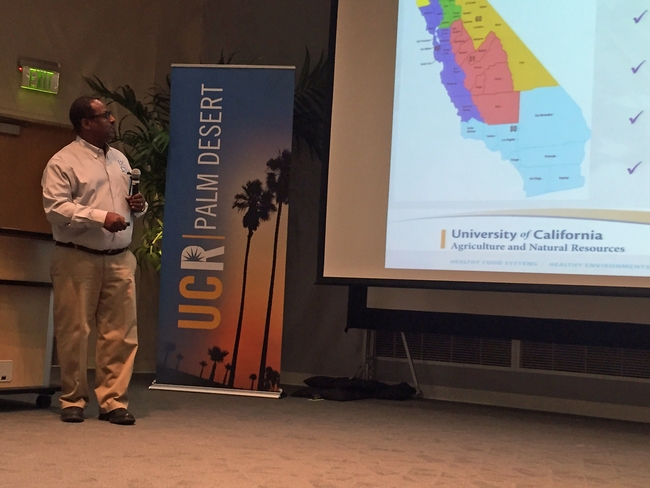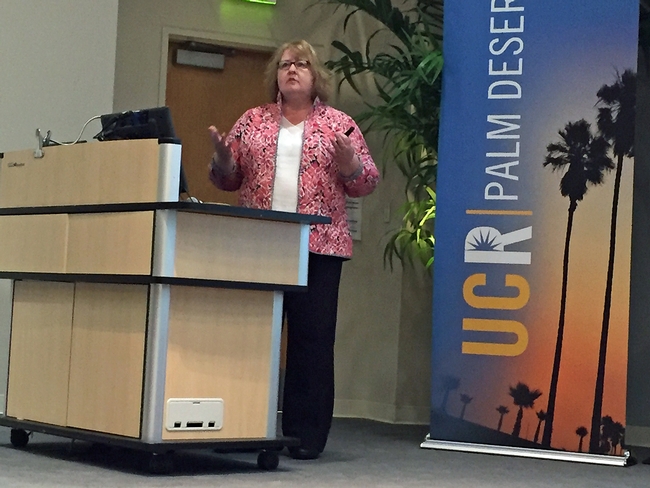
Posts Tagged: Wendy Powers
UC research facility brings state-of-the-art conferencing to Tulelake
UC Agriculture and Natural Resources marked the opening of a new conference and laboratory building at its Intermountain Research and Extension Center in Tulelake July 26, bringing to the region a state-of-the-art facility for business meetings, job fairs, trainings, conferences and community events.
"The facility is the first in the Tulelake area to offer modern audio-visual infrastructure and high-speed internet connectivity capable of supporting remote presentations to stay in touch with groups from around the world," said Rob Wilson, IREC director. "We hope this facility will greatly increase the visibility and accessibility of local events and help draw more regional attention to the area."
UC ANR funded construction of the $2 million building. IREC is working with the community to complete the project with furnishings and equipment.
The conference room is named after John Staunton, a local farmer and supporter of IREC whose family donated $25,000 in his memory to the project. Another conference room bears the name of Winema Elevators/Western Milling for its gift of $15,000. Donations to the facility have also been made by Sensient Natural Ingredients, Macy's Flying Service and Basin Fertilizer
The conference building opening followed the 2018 IREC field day, an annual event that showcases the research underway at the 140-acre facility.
Research presentations included updates about work on biological control of cereal leaf beetle, influence of fall harvest management of irrigated grass hays, onion white rot, managing alfalfa weevil and clover root cucurlio, pulse crop options for the Klamath Basin, cover crops and amendments, cutting schedule effects on low lignin alfalfa and germplasm evaluation of alfalfa and tall fescue.
California’s desert agriculture is hot stuff
Stretching from the Death Valley to Calexico, California's vast dry desert is home to a unique and important agriculture industry.
It's a place where summertime temperatures often top the 115-degree mark. Where water supplies for irrigation depend on the Colorado River, but upriver states are claiming more of it. Where evapotrasporation – a reference rate of water use in unstressed turf grass – is 72 inches per year, but rainfall is rarely more than 4.
Still, stalwart farmers grow dates, carrots, lettuce, broccoli, cabbage, kale and more, plus plants for landscaping everything from family homes to beautiful and luxurious resorts. The agriculture output of the state's three desert counties – Riverside, San Bernardino and Imperial – exceeds $4 billion annually.
The California desert also impacts the quality of life across the nation. If Americans are enjoying a salad in the winter, the lettuce most likely was grown in the California desert. There are bountiful winter recreation opportunities available on the beautifully manicured golf courses, parks and landscapes.
A group of UC Agriculture and Natural Resources (UC ANR) academics formed a desert workgroup to better serve the state's desert region. The group organized a symposium in February to bring together representatives from desert farm and natural resources communities, related industry and academics working in the desert.
“The close exchange of information among desert researchers, non-profit organizations, industry and clientele groups will facilitate collaboration among UC ANR, Arizona and Mexico and foster how our programs should be shaped on a regional level,” said Oli Bachie, the director of UC Cooperative Extension in Imperial County and the current workgroup chair.
With saline soil, scorching summer temperatures and limited water supplies, the desert could be considered a hotbed of the “wicked problem.” A wicked problem isn't evil, said UC Associate Vice President Wendy Powers, the symposium's plenary session keynote speaker.
“The term ‘wicked problem' was coined at UC Berkeley,” Powers said. “It's a problem with circumstances that resist resolution.”
She named climate change and the growth of the global population California must help feed as wicked problems faced by the state. Powers described UC ANR's statewide programs that are working to find solutions to formidable issues faced in California agriculture.
“We're on the verge of some serious breakthroughs as we look at solving wicked problems,” Powers said. “They are accelerated by conversations like those we're having today.”
UC Vice Provost Mark Bell said that the potential of UC ANR to reach every single Californian is what drew him to his position in 2017. Bell invoked Star Wars robot R2D2 for an acronym to reflect the characteristics that accurately define UC ANR.
“R2 stands for reach and relevance,” he said. “D2 is diverse and dispersed.”
UC Cooperative Extension offices serve 57 California counties and its nine research and extension centers are located in key agriculture ecosystems, including one in the low desert of the Imperial Valley.
The afternoon program of the symposium included breakout sessions to highlight programs and research efforts in three broad areas: irrigation and crop production, landscape management, and livestock and feed quality.
“This was the first attempt to organize such a regional desert-based symposium for the UCANR Desert Workgroup with the collaboration of desert-serving UCCE counties,” Bachie said. “I believe that we have registered a remarkable get-together.”
The symposium had speakers and participants from UC, USDA, California Department of Food and Agriculture, the desert agricultural industry, pest control advisors, non-profit institutions and organizations, agricultural commissioners, farm bureaus, Arizona and Mexico universities and the general public.
“I believe that the symposium is a stepping stone for future desert research and extension meetings, conferences and symposiums among people engaged or interested in desert agriculture and natural resources,” Bachie said.


